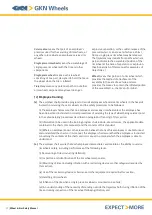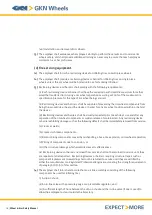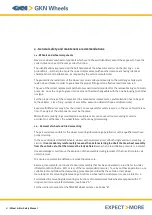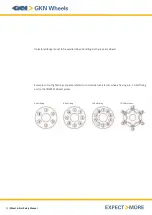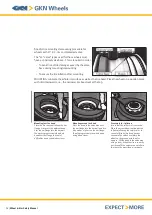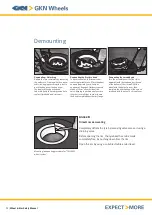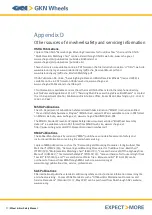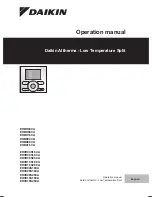
91 |
Wheel & Rim Safety Manual
2.6 - Wheel maintenance
Burrs, marks, and rust must be removed before mounting the tire, to avoid damage to the tire.
When repainting, it must be borne in mind that on the wheel mounting contact areas the total thickness
of coating, including the base coat, should not exceed 50 microns, except where stated differently by the
vehicle manufacturer.
On the TRILEX® wheel system, however, the 15/18°-cones of rim and spoke head must not be painted at all.
In any event, avoid to paint the countersink of bolt seats (where existing) and in general the nut contact
area, on the wheel disc.
Before installing on vehicle and periodically during the use, all parts must be inspected to ensure that
they are clean and free from rust and deposits.
Do not load and inflate the tire/wheel/axle system beyond the rating of the lowest rated component.
Regular checks of the tire inflation pressure are to be made.
The type of balance weights, when used, must be in accordance with the profile of the rim flange.
Follow the vehicle or rim/wheel manufacturer's current manuals for installation instructions,
recommendations and any other additional information.
2.7 - Maintenance of wire spoke wheel
Particular attention must be devoted to the wheels with wire spoke for passenger cars and motorcycles.
The wire spoke is the most critical component, therefore a careful check is recommended after an initial
short running and then at periodical intervals.
When one damaged wire spoke is replaced, the relevant nipple must be replaced, too; moreover, the
qualified charged personnel must verify the efficiency and tensioning of all other spokes.
For replacements, always original spare parts must be used.
Similar care must be given to the coupling parts between the wheel center member and the vehicle axle,
both in the "Rudge" system (locking through a conical nut and connecting teeth) and in the types having
bolts on a conventional fixing.
Attention has to be paid to the thread directions (right wheel, left thread and vice-versa).
Picture No. 1 - Typical stampings to identify
the wheel (i.e. rim size, manufacturer’s
name/logo, manufacturing date, part
number and possible other additional
markings of interest).
Similar markings also may appear on the
rim and rings, where existing.
Partnumber
Rim size
Optional
additional
markings
Reference
standard
Manufacturer
name/logo
Manufacturer
date

